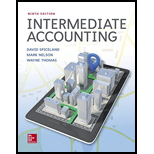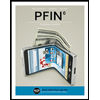
(1)
Pension plan: This is the plan devised by corporations to pay the employees an income after their retirement, in the form of pension.
Defined contribution pension plans: In such plans, employers contribute fixed amounts annually, to the pension fund. The benefit amounts are based on size of pension fund available at the time of retirement. There is no commitment on the part of the employers to pay fixed retirement benefits.
Facts of the case: In an audit survey by an auditor, it is observed that the employee contributions towards the defined contribution pension plans are not reported on the mutual funds statement until the completion of two months, after which the deductions are made. But $500,000 of contributions are deducted from the employee pay checks every month. When the plan was initially begun, contributions were reported immediately invested.
To discuss: The motivation behind the change in reporting the timing of investments
(2)
To discuss: The ethical dilemma for change in in reporting the timing of investments
Want to see the full answer?
Check out a sample textbook solution
Chapter 17 Solutions
Loose Leaf Intermediate Accounting
- A company sells a product for $25 per unit. The variable cost per unit is $15, and the total fixed costs are $50,000. a) How many units must the company sell to break even? b) If the company wants a profit of $10,000, how many units must it sell?arrow_forwardWhat is the amount of sales that will be necessary to earn the desired profit?arrow_forwardWhat do you know about Financial accounting? Explain its pros and cons.arrow_forward
- What is managerial accounting give explanation ?arrow_forwardDon't use ai. A company has the following data: Cash: $50,000Accounts Receivable: $30,000Inventory: $60,000Current Liabilities: $70,000a) What is the company’s acid-test ratio?b) Is the company in a strong liquidity position based on this ratio?arrow_forwardQuestion 5:A company has the following data: Cash: $50,000Accounts Receivable: $30,000Inventory: $60,000Current Liabilities: $70,000a) What is the company’s acid-test ratio?b) Is the company in a strong liquidity position based on this ratio?arrow_forward
- Question 5: Acid-Test RatioA company has the following data: Cash: $50,000Accounts Receivable: $30,000Inventory: $60,000Current Liabilities: $70,000a) What is the company’s acid-test ratio?b) Is the company in a strong liquidity position based on this ratio?arrow_forwardQuestion 4: Depreciation (Straight-Line Method)A company purchases machinery for $50,000. The estimated salvage value is $5,000, and the useful life is 10 years. a) Calculate the annual depreciation expense.b) What will the book value of the machinery be after 4 years?arrow_forwardInventory Valuation (FIFO Method)A company had the following inventory transactions during the month: Beginning inventory: 100 units @ $10 eachPurchase: 200 units @ $12 eachPurchase: 150 units @ $13 eachAt the end of the month, 250 units remain in inventory. Calculate the value of the ending inventory using the FIFO method. explainarrow_forward
 Individual Income TaxesAccountingISBN:9780357109731Author:HoffmanPublisher:CENGAGE LEARNING - CONSIGNMENTPrinciples of Accounting Volume 1AccountingISBN:9781947172685Author:OpenStaxPublisher:OpenStax College
Individual Income TaxesAccountingISBN:9780357109731Author:HoffmanPublisher:CENGAGE LEARNING - CONSIGNMENTPrinciples of Accounting Volume 1AccountingISBN:9781947172685Author:OpenStaxPublisher:OpenStax College PFIN (with PFIN Online, 1 term (6 months) Printed...FinanceISBN:9781337117005Author:Randall Billingsley, Lawrence J. Gitman, Michael D. JoehnkPublisher:Cengage Learning
PFIN (with PFIN Online, 1 term (6 months) Printed...FinanceISBN:9781337117005Author:Randall Billingsley, Lawrence J. Gitman, Michael D. JoehnkPublisher:Cengage Learning





